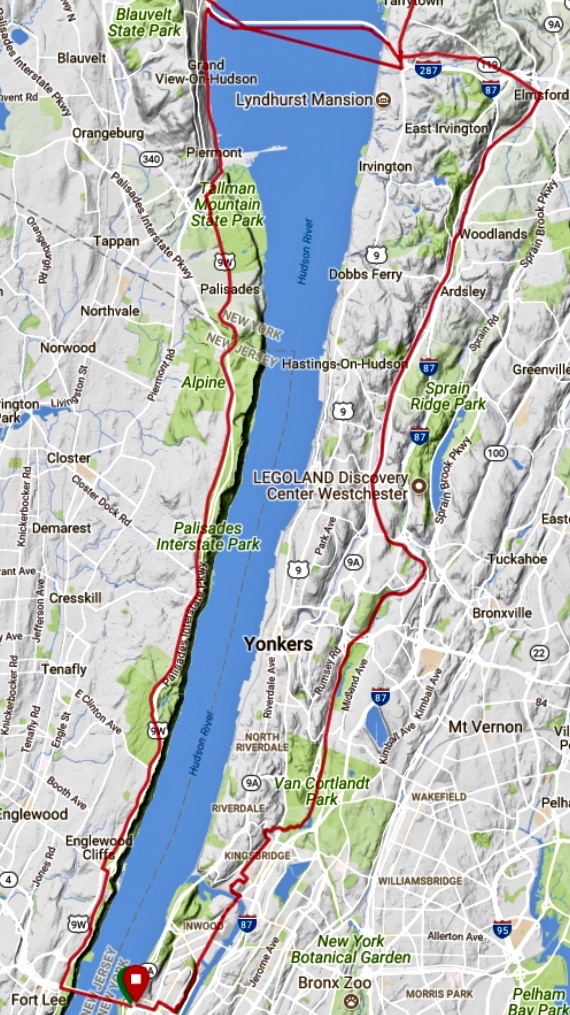Remarks to Manhattan CB12 on Dyckman Street Bike Path – 5/22/2018
Chairman Ally. Community Board Members.
In 2014, CB12 gave me a letter of support calling on the Port Authority to widen the bike paths on the George Washington Bridge as part of the upcoming reconstruction. Today you are joined by Manhattan #4, 7, 9 and Bronx 1, 4, 5, 7, 8, 9 and 12. In all 240 organizations, businesses, communities and elected officials are in support.1
Tonight I will talk about the Dyckman Street bike paths and how developments across the region argue for maintaining the current configuration – the particular beneficiaries being the two dozen restaurants that line the avenue.
Bergen Parks Master Plan
Bergen, New Jersey is moving forward on plans to connect County parks with bikeways, extending access to some of the most densely populated places in the U.S., many of which face a parkland deficit.2
Harlem River Bridge Access
New York City DOT just announced a $90 million program to expand bicycle-pedestrian access across seven Harlem River bridges.3

Empire State Trail
In 2017, Governor Cuomo and the Legislature committed $200 million to expand cycling across NY with the Empire State Trail.4
Mario M. Cuomo Bridge
In 2019, the shared-use path on the Mario Cuomo Bridge will open. This will create a 42 mile loop that will pull in cyclists from across the region.
Cycle Tourism
Rutgers found that active transport added $500 million per year to New Jersey’s economy.5 Rockland, Orange, Dutchess and Westchester Counties (who also support the GWB’s widening) regularly promote cycling to downstate residents.

Inwood-Washington Heights?
Certainly, all the usual reasons to expand cycling infrastructure apply – enhanced affordability, connectivity, resilience, opportunities for exercise and recreation. But here you also have the economic benefit.
A study modeled on the one that secured $39 million to fund Walkway Over the Hudson projects that a similar facility across the George could annually draw 300,000 new visitors, spending $42 million locally and sustaining 675 jobs.6
The GWB now draws 3700 cyclists per day on weekends. This number will grow dramatically as the region builds out it’s cycling infrastructure.7 All these cyclists will have two things in common. They’ll all be hungry and thirsty. And they’ll have to ride through Upper Manhattan to get and from the George.
There are two dozen food shops on Dyckman between Broadway and Nagle. Do you really want to route thousands of potential customers onto Thayer?
Neile Weissman, 2018
Notes
[1] Complete George, completegeorge.org
[2] Bergen Parks Master Plan, Rutgers CUES, p. 139-145, 181-192, https://tinyurl.com/ydx4xm6m
[3] Connecting Communities, NYC DOT/AECOM, https://tinyurl.com/yc5ac9h2
[4] Cycle Tourism, Complete George, http://tinyurl.com/zfcduvw
[5] The Economic Impacts of Active Transportation in New Jersey, USDOT-FHWA-Rutgers University, http://tinyurl.com/oednylm
[6] Linear Park, Complete George, https://tinyurl.com/y9ehkmvm